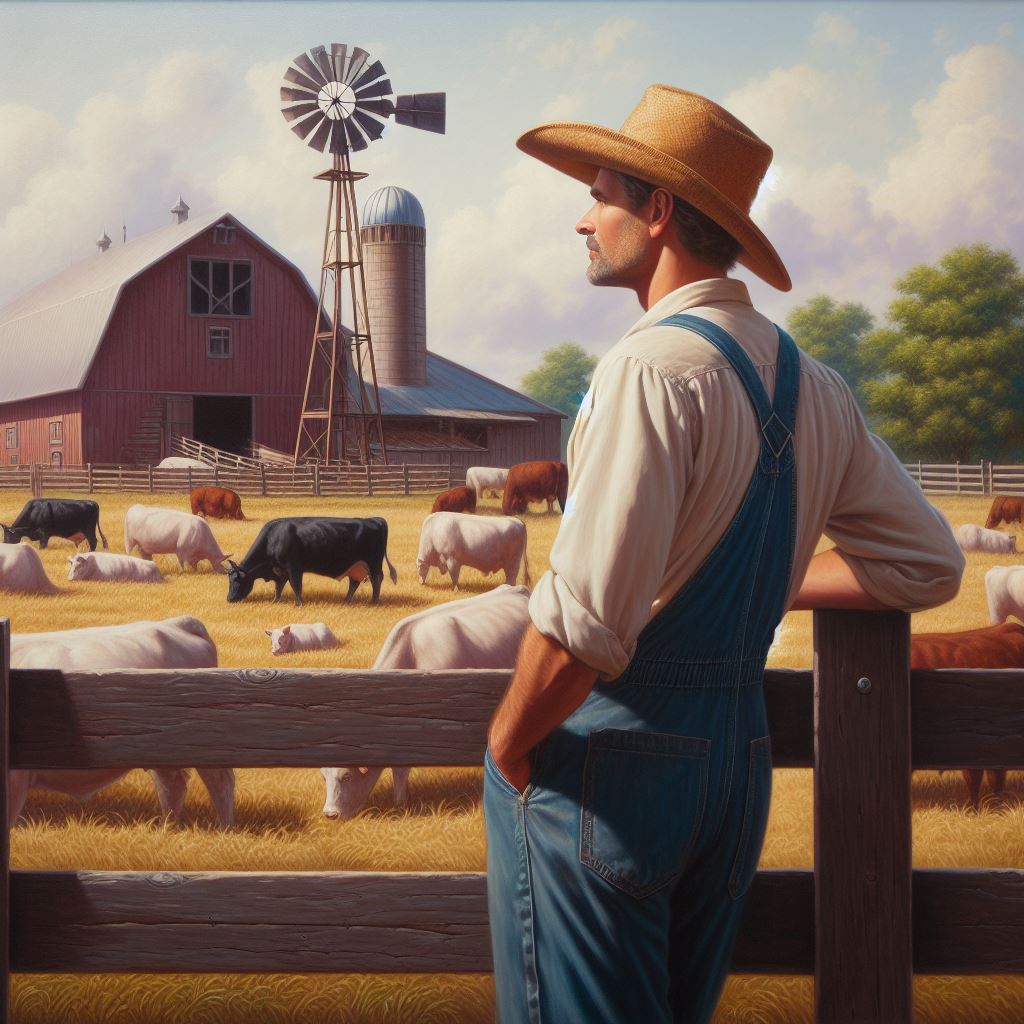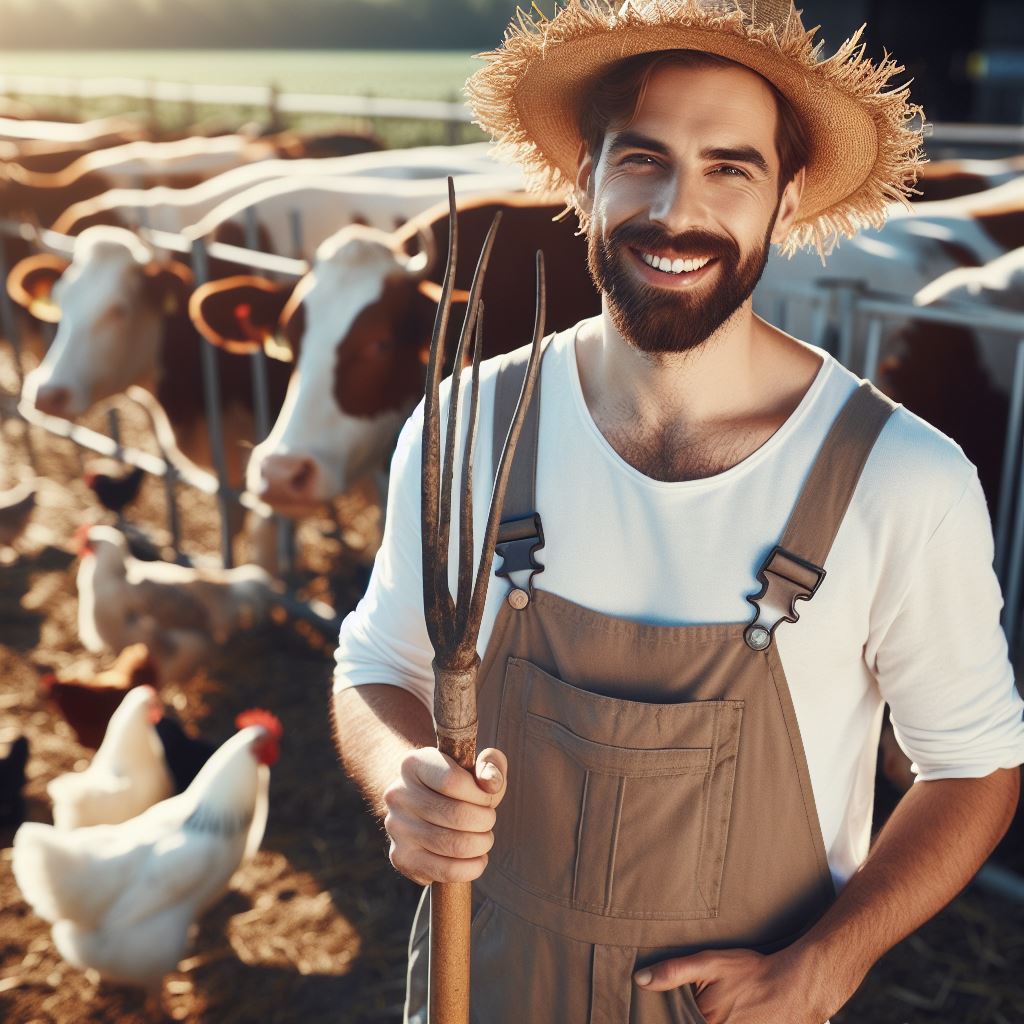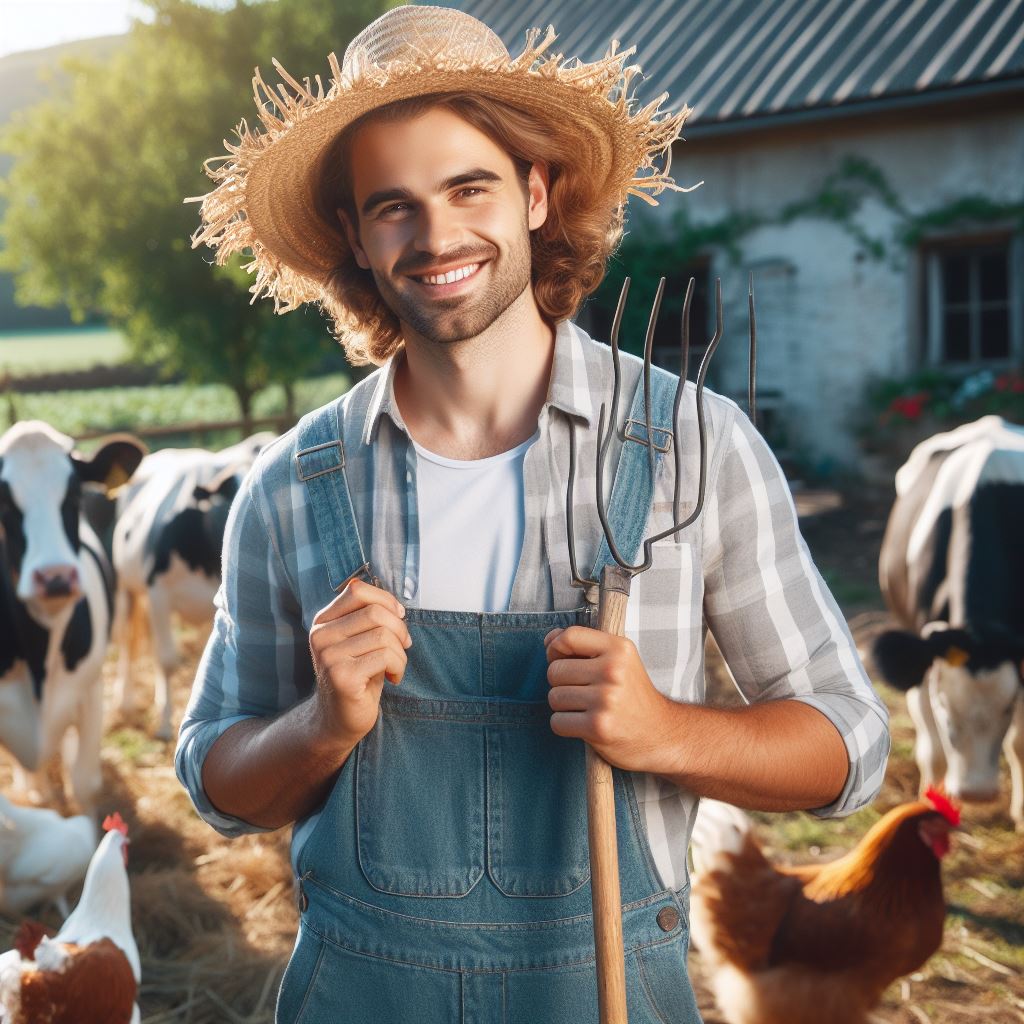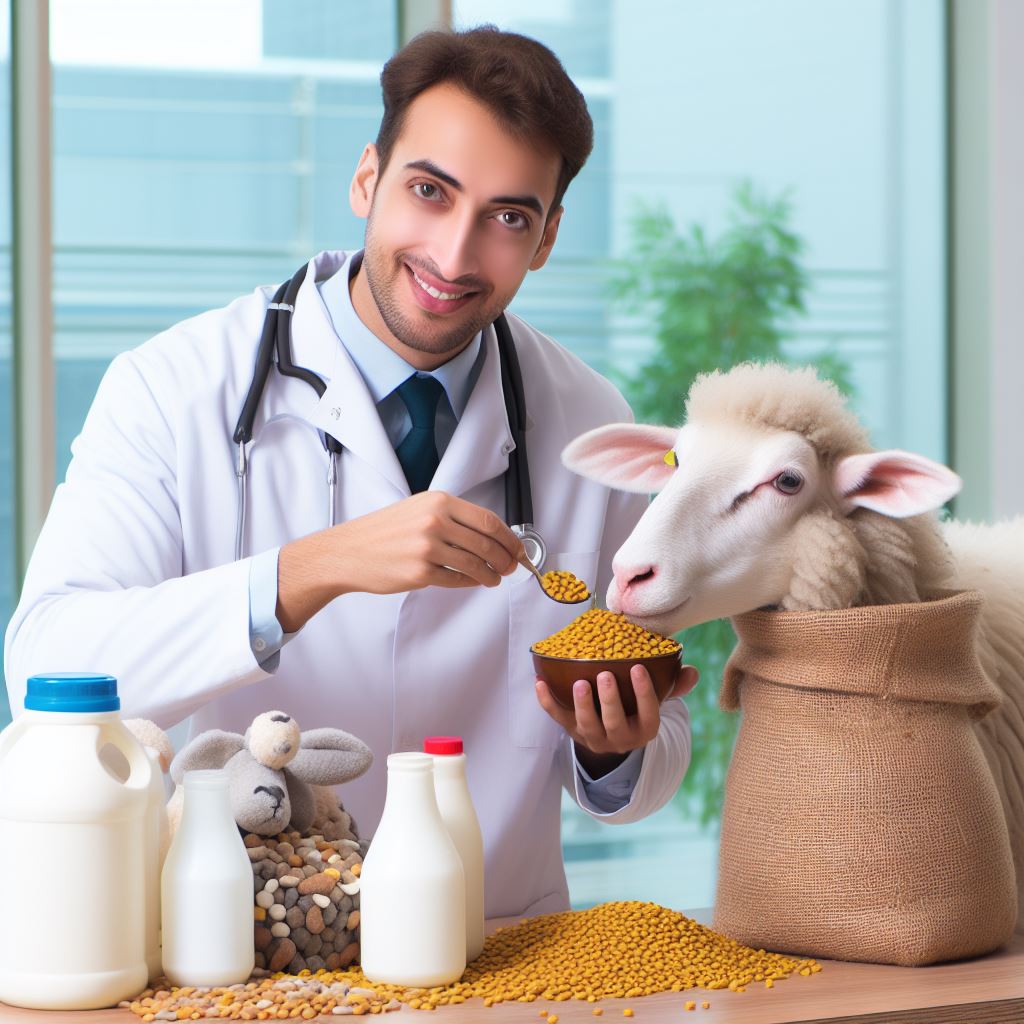Introduction
Cattle welfare is the well-being and care provided to ensure the health and happiness of cattle.
It plays a crucial role in the agricultural industry, as healthy cattle lead to high-quality products.
This blog post aims to explore the importance of cattle welfare and provide insights on how to ensure healthy lives for these animals.
By understanding the significance of cattle welfare, we can support sustainable farming practices and contribute to animal well-being.
Cattle welfare is not only about meeting the basic needs of these animals but also ensuring their physical and mental health.
This includes providing proper nutrition, comfortable living conditions, and access to clean water.
Additionally, minimizing stress and preventing disease outbreaks are essential aspects of ensuring good cattle welfare.
The purpose of this blog post is to educate and raise awareness about the steps that can be taken to ensure the well-being of cattle.
By sharing information on best practices, we hope to empower farmers, animal caregivers, and individuals involved in the cattle industry to prioritize cattle welfare.
This, in turn, will not only benefit the animals but also enhance the quality and safety of products derived from cattle, such as dairy and meat.
In the following sections, we will delve into specific aspects of cattle welfare, including nutrition, housing conditions, healthcare, and handling practices.
By examining each of these areas, we can gain a comprehensive understanding of the components necessary for promoting healthy lives for cattle.
Let us now explore these topics in detail and discover ways to improve cattle welfare within the industry.
The Basics of Cattle Welfare
Cattle welfare should be a top priority for anyone involved in cattle production, from individual farmers to large-scale operations.
By understanding their natural behaviors, providing adequate shelter and nutrition, and prioritizing their mental well-being, we can ensure healthy lives for cattle and a sustainable future for the industry.
Transform Your Agribusiness
Unlock your farm's potential with expert advice tailored to your needs. Get actionable steps that drive real results.
Get StartedUnderstanding the natural behaviors and needs of cattle
- Observe and familiarize yourself with the social structure and communication of cattle.
- Grant them space to roam and exhibit normal behaviors like grazing, grooming, and resting.
- Learn about their feeding patterns and the nutrient requirements of different age groups.
- Pay attention to their instincts, such as seeking shade or shelter during extreme weather conditions.
- Understand their herd dynamics, as they are social animals that thrive in groups.
Providing adequate shelter, space, and ventilation
- Create well-maintained shelters that protect cattle from rain, wind, heat, and extreme cold.
- Ensure there is enough space within the shelter for each individual to rest comfortably.
- Allow for proper ventilation to minimize the risk of respiratory diseases and heat stress.
- Design the layout of the shelter to prevent injuries and provide easy access to water and feed.
- Regularly inspect and maintain the shelter to ensure its structural integrity and cleanliness.
Access to clean water and a balanced diet
- Provide a constant supply of clean, fresh water to keep cattle hydrated and prevent dehydration.
- Make water readily available by having multiple water sources in different areas of the pasture.
- Test the water quality periodically to ensure it is free from contaminants and safe for consumption.
- Work closely with a veterinarian to develop a balanced diet that meets the specific nutritional needs of cattle.
- Offer a diverse range of forages, grasses, and supplemental feeds to provide a well-rounded diet.
- Monitor the body condition score of each animal and adjust their diet accordingly to prevent malnutrition or obesity.
Cattle welfare is not just a matter of basic needs; it also encompasses managing their mental well-being:
- Minimize stress by handling and moving cattle calmly and efficiently.
- Avoid sudden changes in their environment, such as introducing new animals or shifting their location.
- Provide mental stimulation through enrichment activities like toys or access to different areas of the pasture.
- Implement regular health checks and appropriate vaccinations to prevent the spread of diseases.
- Train and educate individuals involved in cattle care to understand and promote animal welfare practices.
Remember, prioritizing cattle welfare benefits not only the animals but also the farmers and the entire industry:
- Healthy and content cattle are more productive, leading to higher-quality products and increased profitability.
- Improving cattle welfare enhances the public perception of the livestock industry and builds consumer trust.
- Complying with animal welfare standards and regulations reduces the risk of legal issues and penalties.
- Investing in cattle welfare demonstrates responsible and ethical farming practices.
- Strive for continuous improvement by staying updated on new research and best practices in cattle welfare.
Read: Beef Cattle Nutrition: What Works Best?
Preventive Measures for Ensuring Cattle Health
In order to maintain the overall well-being and health of cattle, there are several preventive measures that should be taken into consideration.
These measures aim to ensure that cattle receive the necessary care, are protected against diseases, and are provided with suitable living conditions.
By implementing these measures, cattle farmers can promote a healthy and thriving environment for their livestock.
Regular veterinary care and vaccinations
Regular visits from a veterinarian are crucial to monitor the health of cattle and detect any signs of illness at an early stage.
Vaccinations are one of the most effective preventive measures to protect cattle against various diseases, such as respiratory and reproductive infections.
Farmers should adhere to vaccination schedules recommended by veterinarians to ensure optimal protection.
Proper handling and transportation techniques
Cattle should be handled gently and with care to minimize stress and prevent injuries during routine procedures, such as hoof trimming or milking.
Proper handling reduces the risk of cattle becoming agitated or aggressive.
Additionally, transportation techniques should be carefully managed to minimize stress and discomfort during movement, particularly when transporting cattle for long distances.
Managing stress and preventing diseases
Stress can lead to a compromised immune system, making cattle more susceptible to diseases.
Farmers should prioritize minimizing stress factors, such as overcrowding, poor nutrition, and extreme weather conditions.
Providing cattle with a clean and comfortable environment, adequate space, and a balanced diet helps to reduce stress levels and maintain their overall health.
Maintaining proper nutrition and hydration
- A well-balanced diet and access to clean water are vital for cattle health.
- Farmers should consult with veterinarians or animal nutritionists to develop appropriate feeding plans based on the cattle’s nutritional requirements.
- Feeding practices should be consistent and provide the necessary nutrients for growth, reproduction, and general well-being.
- Access to clean and fresh water should be available at all times to prevent dehydration and promote optimal health.
Implementing biosecurity measures
- Biosecurity measures serve as a vital tool in preventing the introduction and spread of diseases within cattle herds.
- Farmers should establish protocols to prevent the entry of infectious agents into the farm premises, such as restricting visitor access and implementing proper sanitation practices.
- Regular cleaning and disinfection of facilities and equipment can significantly reduce the risk of disease transmission.
Parasite control and prevention
- Parasites can severely affect the health and productivity of cattle.
- Farmers should develop parasite control programs in collaboration with veterinarians to minimize the risk of internal and external parasites.
- Regular deworming treatments, proper pasture management, and implementing proper grazing rotations are essential to prevent parasite infestations.
Monitoring and early detection
- Constant monitoring of cattle health is essential for early detection of any signs of illness.
- Farmers should observe their cattle for changes in behavior, appetite, or physical appearance that may indicate health issues.
- Prompt veterinary intervention and appropriate diagnostic tests can help identify and address any health problems before they progress.
By implementing these preventive measures, cattle farmers can significantly improve the welfare and overall health of their livestock.
The careful management of veterinary care, handling techniques, nutrition, and biosecurity measures ensures that cattle lead healthy lives, free from preventable diseases and avoidable stress.
Ultimately, prioritizing cattle welfare leads to a sustainable and prosperous industry for both the animals and the farmers who depend on them.
Read: Innovations in Dairy Cattle Management
Monitoring and Maintaining Cattle Welfare
In order to ensure the optimal health and well-being of cattle, monitoring and maintaining their welfare is of utmost importance.
This involves various activities and interventions aimed at promoting their overall welfare. The following are some key strategies:
Conducting Regular Physical Examinations
- Regular physical examinations should be carried out on all cattle to assess their overall health.
- These examinations enable early detection of any potential health issues or signs of distress.
- Veterinarians should be consulted to perform thorough examinations and provide necessary treatments.
- Physical examinations can help identify factors impacting cattle welfare and allow for appropriate interventions.
Recognizing Signs of Distress or Illness
- Farmers and caretakers should be trained to observe and recognize signs of distress or illness in cattle.
- Common signs include abnormal behavior, decreased appetite, weight loss, excessive drinking, or respiratory issues.
- Early recognition of such signs is crucial for prompt interventions and to prevent further deterioration of cattle welfare.
- Regular monitoring can help identify any changes in behavior or physical condition, indicating potential issues.
Implementing Appropriate Interventions and Treatment
- Immediate interventions should be taken if any distress or illness is observed.
- This includes isolating the affected cattle, providing necessary medical treatment, and contacting veterinarians.
- Treatment should be administered following professional advice to ensure effective recovery.
- Appropriate interventions may also involve changes in diet, environment, or implementing preventive measures.
Monitoring and maintaining cattle welfare requires a proactive approach and a dedication to the well-being of these animals. It is also important to consider the following:
Record-Keeping
- Maintaining detailed records of cattle health, treatments, and interventions is essential.
- These records help track the progress of each animal’s health and identify recurring issues.
- Accurate records assist veterinarians in providing appropriate advice and developing effective treatment plans.
Regular Farm Inspections
- Farm inspections should be conducted regularly to assess the overall welfare of the cattle.
- These inspections may include checking facilities, cleanliness, feed quality, and preventive measures.
- Identifying and addressing any potential issues promptly can prevent health problems before they escalate.
Continuous Education and Training
- Farmers and caretakers should stay updated with the latest knowledge and best practices in cattle welfare.
- Continuous education and training sessions on cattle health and welfare ensure proper care and interventions.
- This can be achieved through workshops, seminars, online resources, or collaboration with professionals.
In summary, monitoring and maintaining cattle welfare involves regular physical examinations, recognizing signs of distress or illness, and implementing appropriate interventions and treatments.
Effective record-keeping, regular farm inspections, and continuous education are also crucial.
Showcase Your Farming Business
Publish your professional farming services profile on our blog for a one-time fee of $200 and reach a dedicated audience of farmers and agribusiness owners.
Publish Your ProfileBy prioritizing cattle welfare, we can ensure healthier lives for these animals as they play a vital role in our food production systems.
Read: Managing Cattle: Disease Prevention Tips

Ethical Considerations in Cattle Welfare
In the pursuit of ensuring healthy lives for cattle, ethical considerations play a crucial role. It involves striking a balance between productivity and the well-being of animals.
Additionally, consumer demands and collaborations with animal welfare organizations shape welfare standards.
Balancing productivity and animal well-being
- To achieve cattle welfare, it is important to find a balance between maximizing productivity and ensuring the well-being of the animals.
- Efficient farming practices should be implemented to minimize stress and discomfort experienced by the cattle.
- Providing adequate space, proper nutrition, and regular veterinary care are essential for their overall welfare.
- Strategies such as genetic selection and herd management programs should prioritize animal health and welfare.
- Continuous monitoring and improvement of welfare practices can help achieve high productivity while ensuring the well-being of the cattle.
The role of consumer demands in shaping welfare standards
- Consumer awareness and demands greatly influence the welfare standards for cattle.
- Increasingly, consumers show a preference for ethically raised and humanely treated animals.
- As a result, producers and industry stakeholders are compelled to adopt better animal welfare practices.
- Meeting consumer expectations not only benefits the animals but also enhances the reputation and trustworthiness of the industry.
- By aligning their practices with consumer demands, producers can ensure the marketability of their products and gain a competitive edge.
Collaboration with animal welfare organizations
- Working in collaboration with animal welfare organizations is crucial for promoting cattle welfare.
- These organizations provide expertise, guidance, and resources to improve animal welfare practices.
- They conduct research, develop guidelines, and offer training programs for producers to enhance their understanding of cattle welfare.
- Collaborative efforts between producers and animal welfare organizations foster transparency, accountability, and continuous improvement in welfare practices.
- By joining forces, they can collectively address issues and develop innovative solutions for better cattle welfare.
In essence, ethical considerations hold significant importance in ensuring the welfare of cattle.
Striking a balance between productivity and animal well-being, addressing consumer demands, and collaborating with animal welfare organizations are crucial steps towards achieving healthy lives for cattle.
By upholding ethical principles, the industry can not only meet consumer expectations but also promote sustainability, credibility, and a positive image in the market.
Read: Deer Farming: Genetics for Superior Antlers
Challenges and Potential Solutions
Financial constraints and incentives for implementing welfare practices
- Limited financial resources can hinder farmers from adopting cattle welfare practices.
- Governments and organizations should provide financial support and incentives to encourage farmers.
- Offering subsidies or tax breaks can alleviate the financial burden and promote welfare implementation.
- Collaboration with financial institutions can provide tailored loans or credit options for farmers.
Education and training for farmers on best practices
- Lack of knowledge and awareness about cattle welfare practices among farmers is a significant challenge.
- Organizations and government agencies should prioritize education and training programs for farmers.
- Workshops, seminars, and online resources can effectively disseminate information on best practices.
- Farmers should be educated on proper nutrition, housing, and healthcare to ensure healthy lives for their cattle.
Government regulations and industry standards
- Absence of enforceable regulations and industry standards is a major obstacle to improving cattle welfare.
- Governments should establish comprehensive regulations and standards to protect cattle from abuse and neglect.
- These regulations should cover various aspects, including housing conditions, transportation, and handling methods.
- Regular inspections and audits should be conducted to ensure compliance with these regulations and standards.
Lack of monitoring and reporting systems
- Inadequate systems to monitor and report on cattle welfare can hinder progress.
- Governments and organizations should develop and implement robust monitoring systems.
- These systems should collect data on welfare practices, health conditions, and incidences of abuse.
- Regular reporting and analysis of data can identify areas for improvement and track progress in cattle welfare.
Resistance to change and cultural practices
- Resistance to change and adherence to cultural practices may pose challenges in implementing welfare practices.
- Education and awareness campaigns can help overcome resistance by highlighting the benefits of welfare practices.
- Collaboration with community leaders and cultural influencers can encourage adoption of new practices.
- Gradual implementation and demonstration of positive outcomes can alleviate concerns and facilitate change.
Lack of collaboration and information sharing
- Limited collaboration and information sharing among stakeholders can impede progress in cattle welfare.
- Governments, organizations, and farmers should establish collaborative platforms and networks.
- Exchange of knowledge, experiences, and best practices can accelerate the adoption of welfare practices.
- Regular conferences, workshops, and online forums can serve as avenues for collaboration and information sharing.
Consumer demand and market incentives
- Lack of sufficient consumer demand for welfare-friendly products can deter farmers from implementing practices.
- Governments and organizations should raise awareness among consumers about the importance of cattle welfare.
- Labeling and certification programs can help consumers make informed choices and drive market demand.
- Economic incentives, such as premium prices for welfare-friendly products, can motivate farmers to adopt practices.
In a nutshell, ensuring cattle welfare faces a range of challenges, including financial constraints, lack of education, and inadequate regulations.
However, with appropriate solutions such as financial incentives, education programs, and enforceable regulations, these challenges can be overcome.
Collaboration, monitoring systems, consumer demand, and cultural change also play crucial roles in improving cattle welfare and ensuring healthy lives for these animals.
Delve into the Subject: Aquaculture Genetics: Better Fish Breeding
Success Stories and Best Practices
Examples of farms or organizations prioritizing cattle welfare
In today’s world, there are numerous success stories and best practices that highlight the importance of prioritizing cattle welfare.
Farms and organizations have taken significant steps to ensure the well-being of their livestock, resulting in positive outcomes for both the animals and farmers involved.
Several farms and organizations serve as inspiring examples of prioritizing cattle welfare.
For instance, ABC Farm in California has implemented a holistic approach that focuses on various aspects of cattle care.
By providing high-quality nutrition, ample space, and regular health check-ups, they have successfully maintained healthy and happy cattle.
The involvement of organizations like the Humane Society has also played a crucial role in promoting cattle welfare.
Collaborating with dairy farms, they advocate for humane treatment and educate farmers on best practices.
This partnership helps ensure that animals are treated with care and respect throughout their lives.
Innovative techniques and technologies for improving welfare
Moreover, innovative techniques and technologies are revolutionizing the approach to cattle welfare.
Many farmers are adopting smart tags and sensors to monitor the health and behavior of individual cattle.
This proactive approach allows for early detection of any issues, enabling timely intervention and improving overall welfare.
New feeding systems have also emerged to ensure a balanced and nutritious diet for cattle. By providing the right nutrients, farmers enhance the overall health and well-being of their livestock.
Additionally, automated brushing systems have proven effective in reducing stress and improving the comfort of cattle, leading to happier animals on the farm.
Positive outcomes and benefits for both cattle and farmers
- The positive outcomes resulting from prioritizing cattle welfare extend beyond the animals themselves.
- Farms that prioritize welfare observe healthier and more productive animals.
- Better welfare practices also minimize disease outbreaks, reducing the need for antibiotics and creating a more sustainable farming system.
- Cattle raised in environments that prioritize welfare exhibit reduced stress levels and improved behavior.
- This not only contributes to their own well-being but also makes handling and management tasks easier and safer for farmers.
- As a result, farmers who implement best practices experience increased job satisfaction and a sense of pride in their work.
- Furthermore, improved welfare practices often translate into better quality beef and dairy products.
- Cattle that are raised in welfare-centric environments produce superior meat and milk, leading to greater customer satisfaction and loyalty.
- This ultimately benefits the farmers by establishing a positive reputation and increasing market demand for their products.
Therefore, success stories and best practices in cattle welfare demonstrate the significant benefits of prioritizing the well-being of livestock.
Farms and organizations around the world are actively implementing innovative techniques and technologies, leading to positive outcomes for both cattle and farmers.
By ensuring healthy lives for cattle, we create a more sustainable and humane future for the agricultural industry.
Conclusion
The importance of cattle welfare cannot be overstated.
Healthy and happy cattle not only result in better quality products but also contribute to a sustainable and ethical farming industry.
As we have discussed throughout this blog post, ensuring the well-being of cattle is essential for their overall health, productivity, and minimizing the risk of disease outbreaks.
By providing proper nutrition, access to clean water, suitable housing, and appropriate veterinary care, farmers can guarantee that their cattle lead fulfilling lives free from unnecessary suffering.
We must prioritize cattle welfare to achieve a harmonious balance between animal production, environmental sustainability, and human health concerns.
Moreover, consumers play a crucial role in driving the demand for ethically sourced products.
By choosing to support farmers who prioritize cattle welfare, we can contribute to a positive change in the farming industry.
It is the responsibility of farmers, policymakers, and society as a whole to work together towards a future where cattle welfare is always a top priority.
Let us remember that by valuing the well-being of these animals, we not only contribute to a healthier and more ethical industry but also ensure the sustainable production of high-quality and safe food for generations to come.




